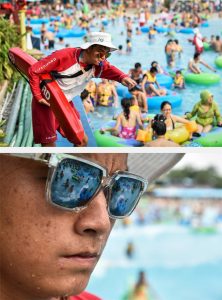It will be important to talk to witnesses to find out whether the lifeguards were actually performing their duties at the time the child drowned. As painful as it might be, it will also be necessary to determine if the child’s actions led to his death. For example, had he been asked to stop some behavior, such as trying to hold his breath under water? It will also be necessary to find out if the part of the park where the child drowned is designed in an unreasonably dangerous way, or is insufficiently marked for danger. Some examples might include a section of a wave pool or river where there is a particularly strong current or undertow or where the waves get higher than in other parts.
It may be more difficult to hold any individual lifeguard liable unless you can show that one, or a group, was acting in a particularly negligent or careless manner. An example of this might be that the lifeguards at that park spend more time chatting among themselves or with members of the opposite sex who are at the water park than watching for park patrons. Your attorney may want to talk to witnesses as well as examine park records for any records of complaints against the lifeguards.
Gallery
